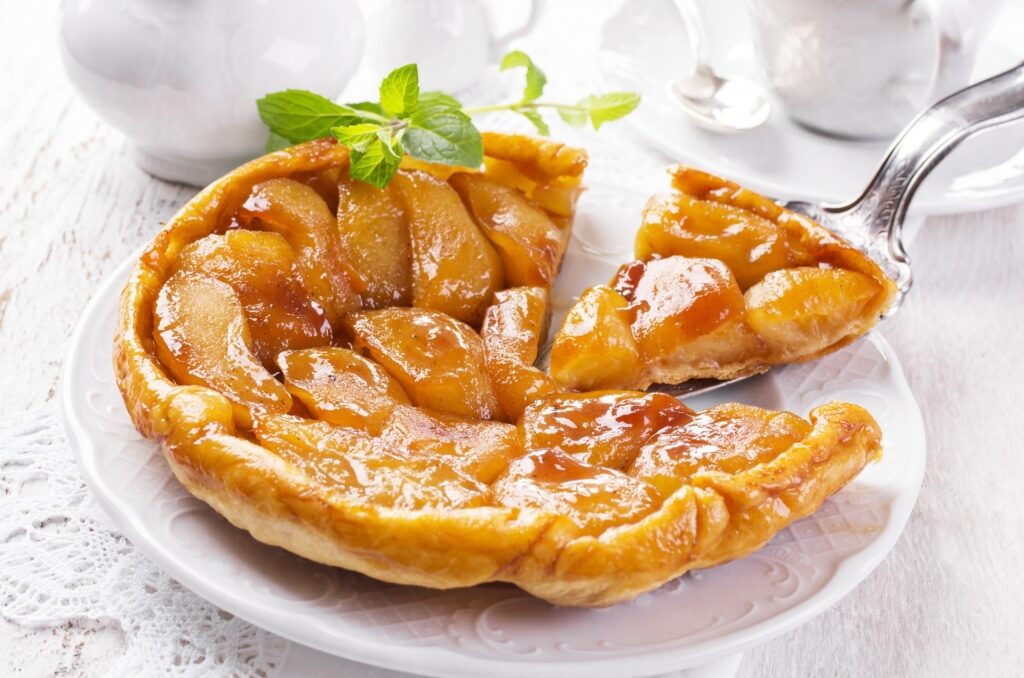Decadent Delight: Tarte Tatin Unwrapped
Indulging in a luscious French dessert is akin to taking a gastronomic excursion through the pastoral landscapes of the Loire Valley or the vibrant bustle of Parisian patisseries. Yet, one sweet treat stands out, not just for its incredible taste, but for its fascinating history and the magic that is woven in every layer of its pastry — the Tarte Tatin. Join us as we peel back the layers of this caramelized delight to uncover the story behind its creation, the ingredients that bring it to life, and a recipe to make your own mark in the scrumptious legacy of Tarte Tatin.
From accidental to essential: The delightful history of Tarte Tatin
Tales of culinary creations often involve flashes of inspiration that strike when we least expect them. The Tarte Tatin, without a doubt, is one such serendipitous creation. Originating in the 1880s at the Hotel Tatin, a small establishment in the heart of the Sologne region in France, the Tarte Tatin’s inception is linked to the Tatin sisters, Stéphanie and Caroline.
The lore goes that one fateful day, a stressed Stéphanie, who was either overworked or simply clumsy, unknowingly neglected to line the bottom of her apple pie dish with pastry. In an attempt to save the dessert, she placed the pastry on top and baked it, later inverting the pie to serve. What emerged was a caramelized apple pie with a distinct upside-down presentation. The pie’s novel appearance and extraordinary taste made it an instant hit.
Ingredients for perfection
The secret to a delectably classic Tarte Tatin lies in the simplicity of its ingredients, each playing a crucial role in the symphony of flavors.
For the pastry:
- 1 1/4 cups of all-purpose flour
- 1/2 teaspoon of salt
- 1 1/2 sticks of unsalted butter, very cold and cut into cubes
- 1/4 to 1/2 cup of ice water
For the filling:
- 1 1/2 pounds of firm, crisp apples (such as Pink Lady, Honeycrisp, or Granny Smith)
- 1/2 cup of granulated sugar
- 4 tablespoons of unsalted butter, at room temperature and cut into pieces
- A squeeze of lemon juice
Optional add-ons for a twist:
- A dash of cinnamon for warmth
- A splash of Calvados or brandy for a boozy uplift
- A zingy zest of orange to brighten the flavors
The Tarte Tatin recipe demystified
While the Tarte Tatin’s historical narrative is charming, it’s the recipe that truly captures our imagination. It’s a profound yet straightforward process that ensures the pastry is flaky, the apples are perfectly caramelized, and the presentation, spectacular.
The Method
- Prepare the pastry: Mix the flour and salt in a large bowl. Add the butter and rub it into the flour with your fingers until the mixture resembles coarse breadcrumbs. Gradually add the water, mixing until it just comes together. Form into a ball, flatten into a disk, wrap in plastic, and chill for at least an hour.
- Prep the filling: Peel the apples, cut them into quarters, and remove the cores. Toss the apples with lemon juice. Sprinkle sugar over the bottom of an ovenproof skillet. Arrange the apples tightly in a circle on top and sprinkle with butter. Cook over moderately-high heat on the stovetop, allowing the syrup to caramelize and the apples to soften.
- Construct the Tarte Tatin: Preheat the oven to 425°F (220°C). Roll out the chilled pastry into a circle that is slightly larger than the skillet. Place the pastry over the apples and tuck the edges inside the skillet. Cut a few slits in the pastry for steam to escape.
- Bake and serve: Bake for about 25 minutes, or until the pastry is golden and firm to touch. Allow the Tarte Tatin to cool slightly (but not completely) before inverting it onto a serving plate.
The result is a dessert that encapsulates the essence of French pastry — rich, buttery, and bathed in a pool of luxurious caramel. Each bite is a symphony of textures and tastes that can transport you to a cozy French bistro.
Indulge and innovate: Tarte Tatin in modern culinary tapestry
In contemporary kitchens, the Tarte Tatin’s classic appeal continues to inspire both amateur bakers and seasoned professionals. Some daring adaptations substitute apples with pears, pineapple, or even savory ingredients like tomatoes. The pastry, too, has seen variations — from almond flour crusts to puff pastry tops, each offering a nuance of taste and texture.
For the health-conscious, there are lighter versions using phyllo dough or almond meal. And for those on a time-crunch, mini Tarte Tatins offer a shortcut to sweet satisfaction. The Tarte Tatin lends itself to creativity without sacrificing its core charm, which lies in the alchemy of the pastry, caramel, and fruit — the three pillars of its flavor profile.
In closing, the Tarte Tatin stands not only as a symbol of French culinary finesse but as a testament to the power of accident in the world of gastronomy. What began as a mistake has become a mainstay in the lexicon of iconic desserts, a rags-to-riches tale in the realm of sweets. Whether you choose to savor a slice at a patisserie along the Seine or master the art of its creation in your own kitchen, the Tarte Tatin promises a culinary experience that is nothing short of enchanting.
